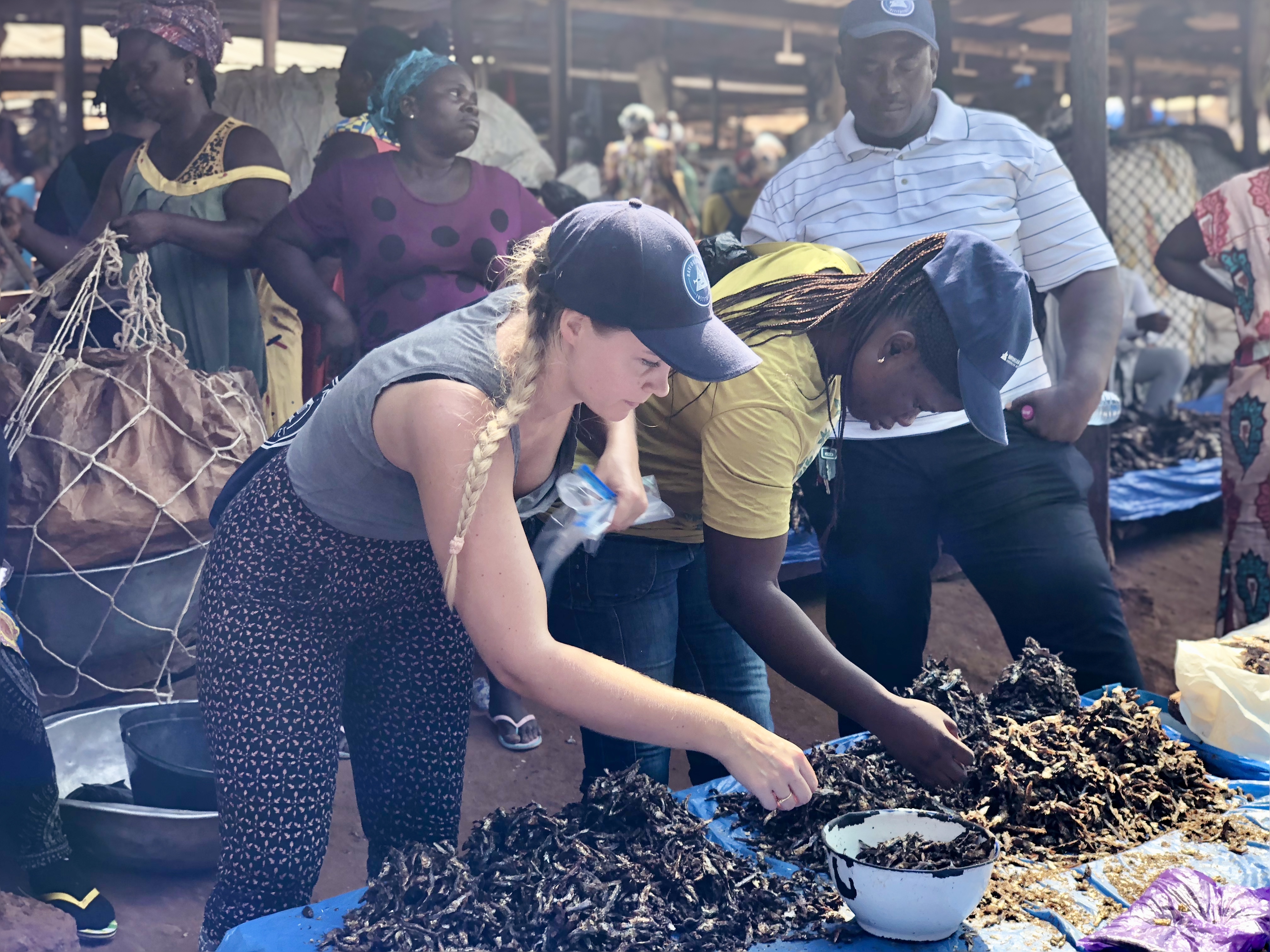Processed fish from Ghana is rich in nutrients

Research scientist Marian Kjellevold (left) og scholar Astrid Elise Hasselberg at a fish market in Ghana.
Photo: Institute of Marine ResearchPublished: 24.11.2020 Updated: 22.12.2020
During fieldwork in Ghana in 2018, researchers collected samples of freshwater and saltwater fish from fish markets up and down the country, and now they have published their results.
“These fish are rich in critical micronutrients such as omega-3 and vitamins A and B12”, says the research scientist Marian Kjellevold.
The fish sold at markets in Ghana is processed. That means it is either smoked, salted or sun-dried, so that it can be stored and transported without being refrigerated.
“We had thought that processing techniques like smoking and sun-drying might reduce the nutritional value of the fish, but they didn’t, which came as a surprise to us”, she continues.
One step further along the value chain
Countries in Africa and Asia have little documentation of the nutrients and contaminants found in seafood, or in food in general. Recent analysis by the Institute of Marine Research (IMR) has shown that the raw fish caught off the coast is rich in nutrients (Also see: African fish are rich in many important nutrients).
“Now we have moved one step further along the value chain, by obtaining important data on the composition of the fish sold at fish markets”, says Kjellevold.

Data from the FAO (the UN Food and Agriculture Organization) shows that the people of Ghana have a high seafood intake. However, deficiencies in micronutrients such as iron, zinc, iodine and vitamin A are common.
Want to know if children in Ghana eat enough fish
A lack of micronutrients is known as “hidden hunger”. Amongst other things, it means that 18 percent of Ghanaian children suffer from impaired growth.
That’s why scientists at the IMR now want to analyse the food eaten by children in Ghana. Do they eat the fish whole, do they eat just some parts of the fish, or do they eat fish too rarely?
“We want to find out how the fish is prepared, and what kinds of fish children eat during their meals”, says the researcher.
“It is incredibly important to combat micronutrient deficiency. Fish is a good source of various nutrients, it is readily available and should form part of our diet.”
Found high PAH levels
Fish from the markets were also analysed for contaminants. In general, the contaminants found were below the limit values, but scientists found high levels of polycyclic aromatic hydrocarbons (PAHs) in the smoked fish. Some of the PAH levels were 40 to 50 times higher than the EU’s limit values.
“It is a known issue that smoked fish can contain high levels of PAHs, because these chemicals are formed during the smoking process”, explains the researcher.
PAHs are a group of hydrocarbons, some of which are known to have carcinogenic and mutagenic properties.
“The FAO has developed ovens that reduce PHA levels, but our results suggest that these ovens are not being used.”
All of the samples of the freshwater fish pygmy herring contained high mercury levels, and some of them also contained high lead and iron levels.
“We know little about the West African pygmy herring, and these findings should be investigated further”, says Kjellevold.
Referance
Hasselberg, A. E., Wessels, L., Aakre, I., Reich, F., Atter, A., Steiner-Asiedu, M., ... & Kjellevold, M. (2020). Composition of nutrients, heavy metals, polycyclic aromatic hydrocarbons and microbiological quality in processed small indigenous fish species from Ghana: Implications for food security. Plos one, 15(11), e0242086.
Link: https://doi.org/10.1371/journal.pone.0242086
